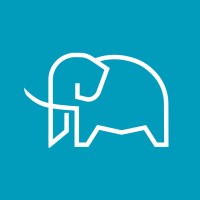An accounting dashboard is a visual representation of financial data that allows business owners to track performance and make better business decisions. The most important benefit of using an accounting dashboard is its ability to help small businesses in the UK make better strategic decisions by providing a snapshot of their company’s financial health.
History of Accounting Dashboards
The first accounting dashboard was created in the early 2000s by a company called Clearpoint Strategy. Clearpoint Strategy is a software company that specialises in creating visual representations of data. The company’s founder, Mitchell Harper, developed the idea for an accounting dashboard after he saw how difficult it was for business owners to understand their financial data.
The first version of the accounting dashboard was a simple Excel spreadsheet that included four main elements: income, expenses, profit or loss, and balance sheet. Since then, the accounting dashboard has evolved to become a more sophisticated tool that can be customised according to the specific needs of businesses.
Nowadays, there are many different software programs that allow businesses to create accounting dashboards. These programs typically offer a wide range of features and allow businesses to customise their dashboards to suit their specific needs.
Terms You Should Know About an Accounting Dashboard
There are a few terms that you should know about an accounting dashboard before using one. These terms will help you understand how the dashboard works and what it can do for you.
Some of the terms that you should know about an accounting dashboard include
- Financial statements: Financial statements provide an overview of a company’s financial health and performance. They should be included on every accounting dashboard
- Key performance indicators (KPIs): KPIs are metrics that businesses use to track their progress and performance. They should be included on every accounting dashboard so that businesses can track their progress over time
- Projections: Projections give businesses an idea of how they will perform in the future. They should be included on every accounting dashboard so that businesses can plan for the future
- Budget: The budget is a tool that businesses use to track their income and expenses. It should be included on every accounting dashboard so that businesses can see where they are spending their money.
Why Use an Accounting Dashboard?
There are several reasons why you should use an accounting dashboard, including
1. It provides a snapshot of your company’s financial health: An accounting dashboard can help you quickly and easily see how your company is performing financially. This information can help you make better strategic decisions about where to allocate your resources and how to grow your business
2. It helps you track performance over time: An accounting dashboard allows you to track performance against goals or targets that you have set for your business. This information can help you identify areas where you need to make changes in order to improve performance
3. It makes financial data easier to understand: An accounting dashboard presents financial data in a visually appealing way, which makes it easier for business owners to understand and act on
4. It’s customisable: An accounting dashboard can be customised according to the specific needs of your business. This means that you can always ensure that you are seeing the most important information relevant to your company.
Benefits of Using an Accounting Dashboard
There are several benefits of using an accounting dashboard, including
1. It can help you save time: An accounting dashboard can help you save time by allowing you to quickly and easily access the information you need. This can be particularly helpful if you need to make a decision about your business but don’t have the time to go through all of your financial data
2. It can help you make better decisions: An accounting dashboard can help you make better strategic decisions by providing a clear overview of your company’s financial health. This information can help you allocate your resources more effectively and make decisions that are in the best interests of your business
3. It can help you track your progress: An accounting dashboard can help you track your progress over time by allowing you to compare your current performance against past performance. This information can be very helpful in identifying areas where you need to make changes in order to improve your business.
How to Create an Accounting Dashboard
There are many different software programs that allow businesses to create accounting dashboards. These programs typically offer a wide range of features and allow businesses to customise their dashboards to suit their specific needs.
Some of the most popular accounting dashboard software programs include
1. Clearpoint Strategy: Clearpoint Strategy is the company that created the first accounting dashboard. The company offers a software program that allows businesses to create customised dashboards
2. Microsoft Excel: Microsoft Excel is a popular spreadsheet program that can be used to create an accounting dashboard. Excel includes a wide range of features and is relatively easy to use
3. Tableau: Tableau is a data visualisation software program that can be used to create an accounting dashboard.
4. Google Sheets: Google Sheets is a free online spreadsheet program that can be used to create an accounting dashboard. Google Sheets includes many of the same features as Excel and is very easy to use.
Once you have selected the software program you want to use, you will need to gather the data that you want to include in your dashboard. This data can come from a variety of sources, such as accounting software programs, financial reports, and even manual records.
Once you have gathered all of the necessary data, you will need to input this data into the software program you are using. This process will vary depending on the software program you are using, but most programs will have some sort of drag-and-drop interface that makes it relatively easy to input your data.
After you have inputted all of your data, you will then need to create the actual dashboard. This process will also vary depending on the software program you are using, but most programs will allow you to create a dashboard by simply selecting the data you want to include and then choosing how you want this data to be displayed.
Once you have created your dashboard, you will then need to save it so that you can access it later. This process will again vary depending on the software program you are using, but most programs will allow you to save your dashboard as a file on your computer.
What to Include in an Accounting Dashboard?
An accounting dashboard typically includes four main elements
- Income or Revenue: This section shows how much money your business has earned over a specific time period
- Expenses: This section shows how much money your business has spent over a specific time period
- Profit or Loss: This section shows whether your company has made a profit or loss over a specific time period
- Balance Sheet: This section shows your company’s assets (what it owns), liabilities (what it owes), and net worth (assets – liabilities)
The most important thing to remember when creating an accounting dashboard is to ensure that it is tailored to your specific business needs. Be sure to include only the data that is relevant to your company and remove any unnecessary information.
Some of the things, for further comprehension, that should be included on every accounting dashboard include:
1. Financial statements: Financial statements provide an overview of a company’s financial health and performance. They should be included on every accounting dashboard
2. Key performance indicators (KPIs): KPIs are metrics that businesses use to track their progress and performance. They should be included on every accounting dashboard so that businesses can track their progress over time
3. Projections: Projections give businesses an idea of how they will perform in the future. They should be included on every accounting dashboard so that businesses can plan for the future
4. Benchmarks: Benchmarks allow businesses to compare their performance to other businesses in their industry. They should be included on every accounting dashboard so that businesses can see how they stack up against their competitors.
What Makes a Good Accounting Dashboard?
There are many different things that can make an accounting dashboard good. However, there are a few key things that all good accounting dashboards should have.
Some of the things that make a good accounting dashboard include
1. Easy to understand: A good accounting dashboard should be easy for anyone to understand. It should be clear and concise, and it should only include information that is relevant to the business
2. Actionable: A good accounting dashboard should provide businesses with information that they can use to improve their performance. The dashboard should not just be a bunch of numbers and data points; it should provide insights that businesses can use to make changes
3. Customisable: A good accounting dashboard should be customisable so that businesses can tailor it to their specific needs. businesses should be able to add or remove data points, and they should be able to change the way the dashboard looks so that it meets their specific needs
4. Up-to-date: A good accounting dashboard should always be up-to-date with the latest information. This way, businesses can trust that the information on the dashboard is accurate and relevant.
Account Payable Dashboard
Closely connected to the practice of developing an accounting dashboard, an account payable dashboard is a tool that businesses use to track and manage their accounts payable. The dashboard typically includes information such as the amount of money owed to suppliers, the due date of payments, and the status of payments.
The account payable dashboard is an important tool for businesses because it allows them to stay on top of their accounts payable. This is important because if businesses do not pay their bills on time, they could face late fees or even default on their loans.
The account payable dashboard is also important because it allows businesses to track their spending. This is important because it allows businesses to see where they are spending most of their money. This information can be used to make changes to a business’s spending habits.
The account payable dashboard is a tool that every business should have. It is a valuable tool that can help businesses stay on top of their accounts payable and track their spending.
To learn more, get in touch with us today.




